
Methods and Exercises to Add to your Training in 2020
Hindsight is 20/20, but that doesn’t mean 2020 needs to be in the rearview mirror before you ditch last year’s moves in the gym. It’s a new decade — time for your workout routine to refresh and evolve.
These concepts and the exercises that follow will not only boost your productivity in the gym but make your workouts more fun and interesting. Try them out and make 2020 your year:
Less in Isolation, More in Integration
If you are looking to optimize your training and be more productive in the gym, then leave isolated, single-joint exercises in 2019. I’m looking at you, bicep curls and machine leg extensions. Not to say these exercises don’t have a place within your training program – they just shouldn’t be the focal point.
At the heart of any training program should be full-body, multi-joint movements that get your body moving as an integrated unit. These exercises are also known as compound movements.
Compound movements allow you to recruit more muscle fibers because more joints are involved in moving the weight. Exercises that utilize more muscles and joints elevate the heart rate and require more oxygen, so they increase your net energy expenditure. These are great additions because you can work more of your body in less time, which gives you more bang for your buck.
Compound movements are also great for building strength since you have more muscle fibers and joints working in tandem to coordinate and aid in moving weight.
Playbook: Squat, Deadlift, Barbell Glute Bridge, Push-up, Pull-up, Bent-over Row, Squat to Overhead Press
Prehab
Your warm-up routine is probably lacking (or non-existent), but exercise-related pains and injuries are not. If this sounds like you, then it’s time to upgrade your warm-up and focus on the little things to get your body ready for the workout at hand.
Introducing “prehab.” Think of prehab as rehab, but before you get injured. It’s injury prevention and reduction intended to mobilize tight or overactive joints and tissues and to strengthen other muscles to make sure they are firing during your workout.
A couple of areas prone to injury and exercise-related pain are the knees, lower back, and shoulders. A solid prehab routine should focus on mobilizing and strengthening tissues around those joints.
For example, lower back and knee pain are strongly linked to tight hip flexors (front of your thigh) and weak or inactive glutes and core. Take some time before your warmup to foam roll, dynamically stretch your hips, and activate your core and glutes to get the most out of every single lower body movement — whether that’s running, cycling, or squatting.
Playbook: Glute Band Walks, Single Leg Glute Bridges, Bird Dogs, Low and Side Planks
Another area prone to injury are the shoulders — usually attributed to rounded shoulder posture and usually characterized by shoulder clicking since there is less space around the shoulder joint to move freely. I call this “cell-phone posture.” The anterior (front) part of your shoulder tends to be relied upon too heavily during push exercises (where your chest should be doing most of the work) and pull exercises (where your upper back should be doing most of the work.)
In this case, you’ll want to mobilize the anterior part of your shoulder. Mobilize these tissues by lying face down with a lacrosse ball located where your chest meets your shoulder to release the muscle. Once you find a spot on your upper chest that is particularly tender, hold and take 5-10 deep breaths filling your lungs with as much air as possible. Try to relax in this position. If this is too much pressure, you can also perform this standing against a wall.
Once you mobilize, strengthen your upper and mid-back (lats, mid and lower traps, and rhomboids) with pulling exercises.
Playbook: Soft tissue rolling with a lacrosse ball, Bent-over Rows, Suspension Strap Y’s and T’s
Pro-Tip: Think about lengthening your spine, creating a proud chest, and pulling with your elbows (not your shoulders) and squeezing a pencil between your shoulder blades (aka your scapula).
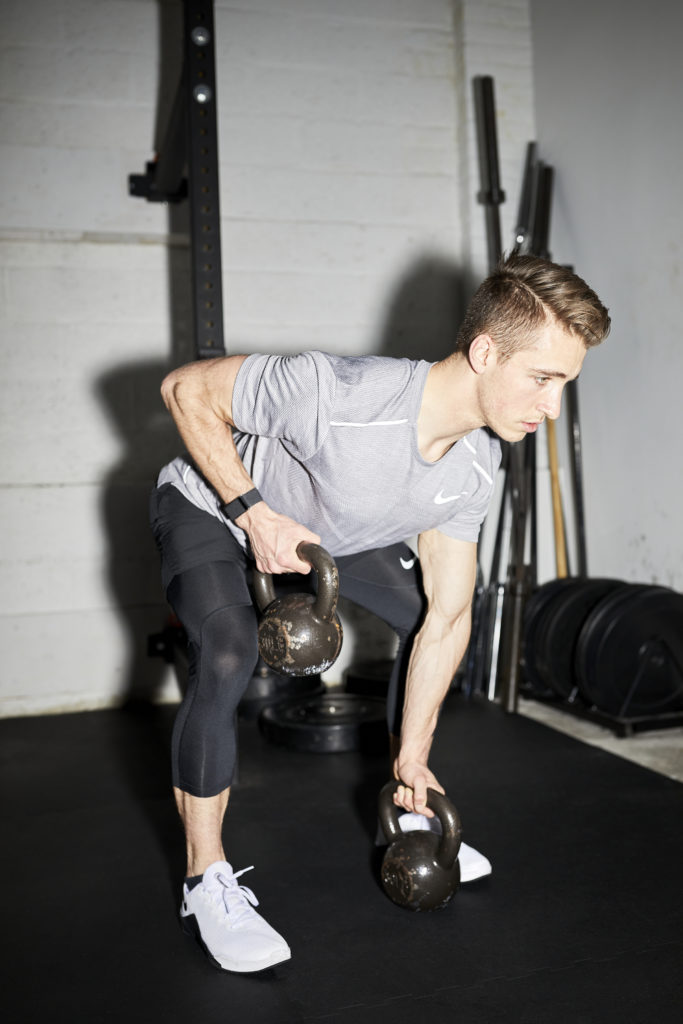
Bent-over Rows
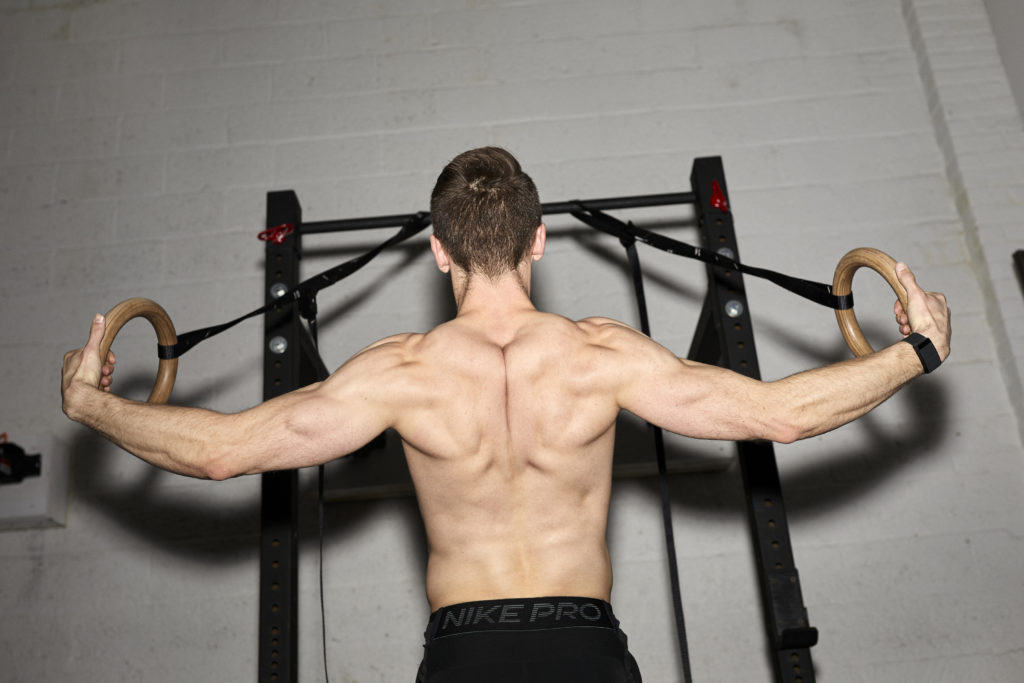
Suspension Strap Y’s and T’s
Multi-Planar Movements
Despite the human body and the world around us is three-dimensional, a lot of training and traditional exercises tend to focus on only one dimension (think forward and backward movements like running, squatting, lunging.)
You have three planes of motion:
- Sagittal: forward and back movement
- Frontal: side to side movement
- Transverse: rotational movement
Diversifying your movement patterns to different planes of motion will help you gain strength and stability more globally throughout your body (as opposed to working the same joints and muscles over and over again in the same direction.)
Being able to create, resist, and transfer force in all planes of motion will help reduce injuries, too. You need to be able to resist rotational forces on your knees when you’re running or squatting and land without twisting your ankle after going up for a lay-up on the basketball court.
Playbook:
- Frontal Plane: Side lunges, Walking Push-up Planks, Lateral Band Walks
- Transverse Plane: MB Rotational Throws, Rotation Lunges (starting with your feet together facing towards a 12 o’clock position, lift your right leg and rotate clockwise into a lunge so your right foot is at a 5 o’clock position, drive back up through your right heel back to your left foot at the 12 o’clock position)
Add these for 10-12 reps to complement your sagittal plane movements.
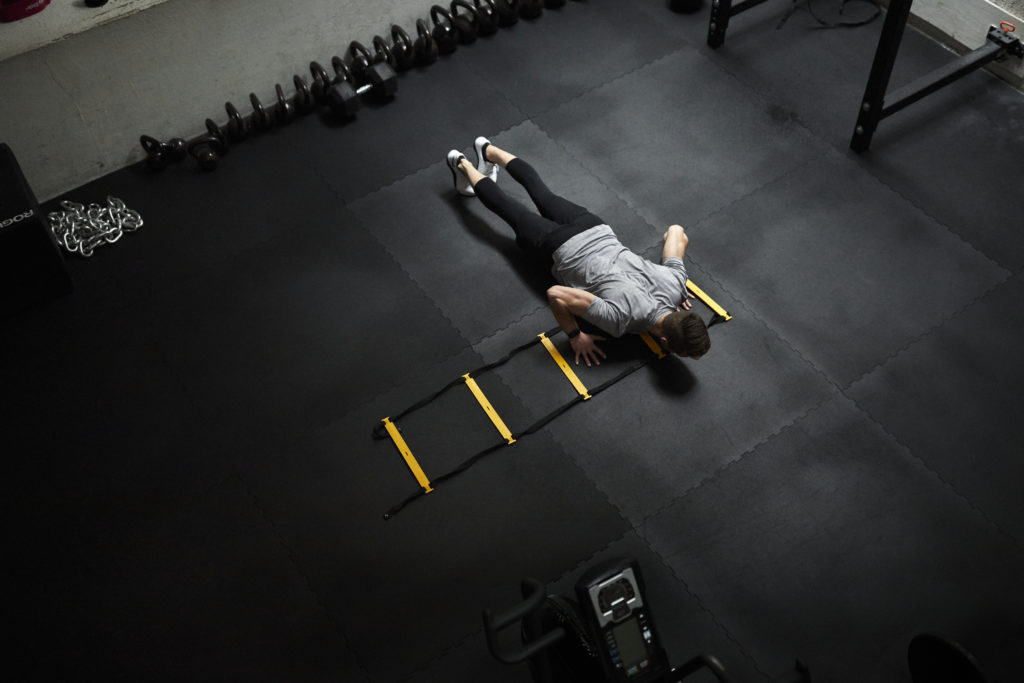
Walking Push-up Planks
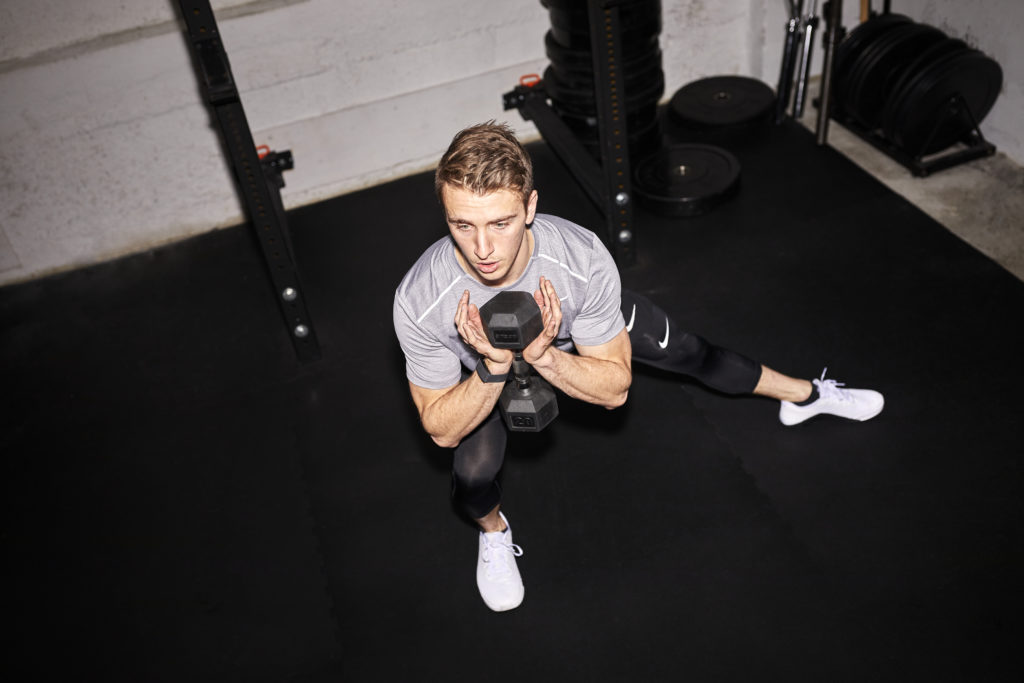
Side lunges
Unilateral Strength
Do you ever catch yourself leaning more of your weight on one leg while standing? Do you feel your weight shift while you’re performing certain exercises like squats or deadlifts? Maybe on the bench press, one arm fatigues while the other could easily bang out a few more reps?
This is common, but it’s even more common for gym-goers not to do anything about it. Injuries also tend to occur when one side of the body (muscle or joint) repeatedly takes more impact, pressure, and force than the other — and gives out.
No matter the training goal, incorporating unilateral work (single-limb exercises) will work both sides of your body equally to correct muscular imbalances and avoid overtraining or overusing your dominant side. You’ll get stronger on your bilateral exercises too since both sides of your body will start working together a bit more evenly and effectively.
Playbook:
- Lower Body: Step-ups, Pistol Squats, Lunges
- Upper Body: Single Arm Bench Presses, Overhead Presses, and Row
- My go-to: Single Leg Squat Hold with Single-Arm Dumbbell Row
Aim for 3-4 sets of 12 reps on each side.
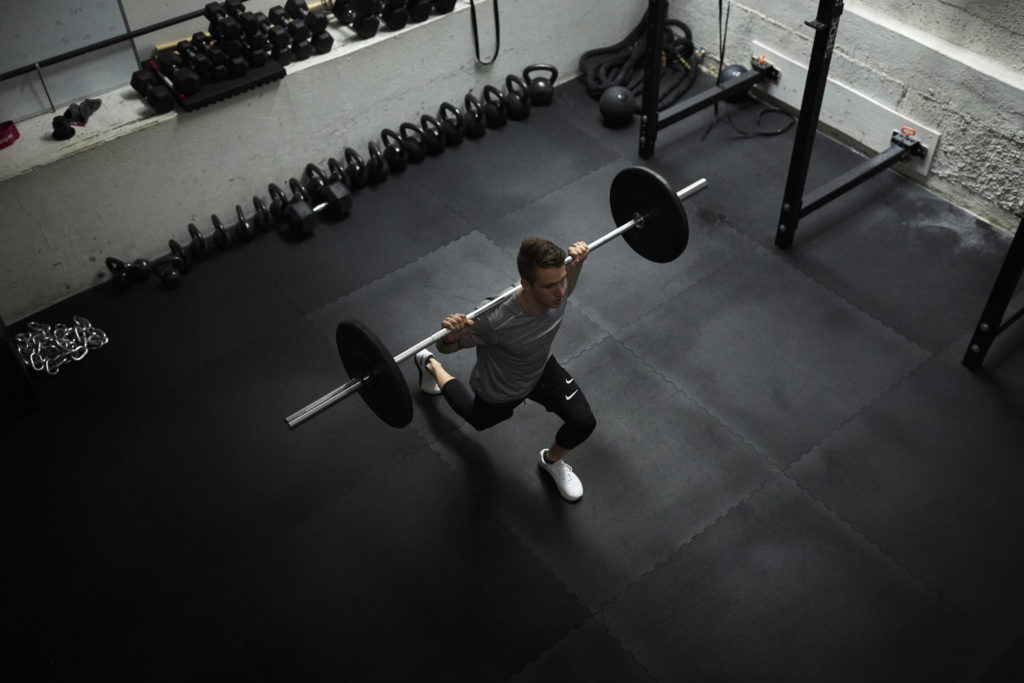
Single-Leg Squat Hold
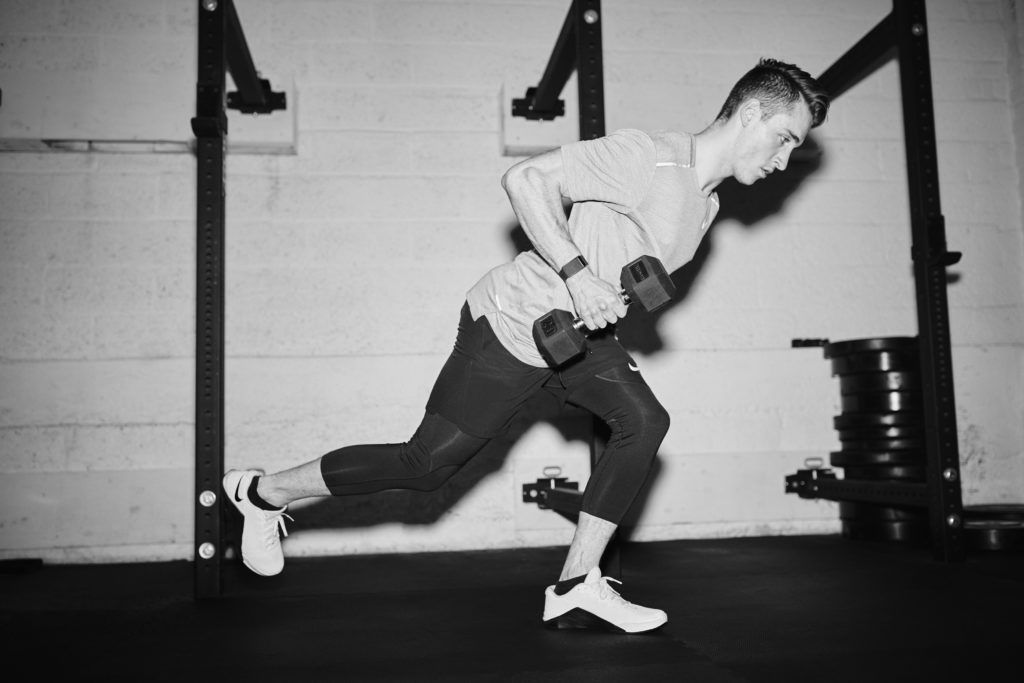
Single-Arm Dumbbell Row
Core Training > Ab Training
One of the most popular fallacies of gym-goers is that having visible abs is an indicator of a strong core. Yes, your abs make up a portion of your core but that is missing the bigger picture. Train for the core’s function, not just for purely aesthetic purposes. You won’t be able to crunch or side bend your way to visible abs. Only with proper core training and, more importantly, diet and a reduction in body fat percentage, will you be able to see changes in your ab wall.
Your core musculature is really made up of two parts:
- The outer or superficial layer (rectus abdominis) a.k.a. “six-pack abs”
- The inner layer (transverse abdominis and internal obliques) a.k.a. your deep stabilizers
Your deep core stabilizers are involved in practically everything you do and when they’re strong, they can aid in injury reduction. From deadlifting to reaching overhead to walking up the stairs, your functional core is there to stabilize. Your superficial layer is more about creating motion (ie. sit-ups, crunches, side bends, back extensions.) So train your core for its primary function: stability and prevention of motion. When your core is strong and properly activated, it will be engaged throughout each exercise of your workout and you’ll get more out of each rep. This will benefit you far more than tacking on a 5-minute mat ab routine to the end of your training session.
Playbook:
For a holistic core program, utilize isometric stability (exercises with very little movement) and dynamic stability (where your core has to stabilize your moving body), and train your core in all three planes of motion:
- Anti-Extension (sagittal plane): Core’s ability to prevent excess lower back extension
- Isometric: Low and High Plank, Deadlifts
- Dynamic: Suspension Strap Fallouts
- Anti-Lateral Flexion (frontal plane): Core’s ability to prevent excess side-bending
- Isometric: Side Plank
- Dynamic: Single Arm Farmer’s Carry, DB Single Arm Overhead Press
- Anti-Rotation (transverse plane): Core’s ability to prevent excess rotation
- Isometric: Pallof Press
- Dynamic: Offset Racked Squat (kettlebell or dumbbell racked only on one side of your body while you squat), Renegade Row
Try incorporating some of these movements to your warm-up prehab routine to activate your core before your workout, as well.
——————————————————————————————
Plyometrics and Strength Contrasting
Plyometric training is an important modality meant to increase power production (strength and speed). These include hops, skips, bounds, throws, and jumps.
For most populations, some form of power training is great for joint and connective tissue health and to improve the ability to generate force as efficiently as possible. Utilizing plyometric exercises in your warm-up is a great way to prime the body before you workout since these movements enhance the recruitment rate of muscle fibers.
You can also incorporate them within your workout using a method called “contrasting.” For contrast training, you pair a moderately heavy strength exercise (like squats, deadlift, bench press for 5 sets of 4-8 reps) with a complementary power exercise of a similar movement pattern (ie. squats with squat jumps, deadlifts with medicine ball slams, bench press with explosive push-ups). Remember, the goal with these plyometric exercises is peak power, speed, and explosiveness in shorter bouts of work— not high volume conditioning— so aim for 4-6 high-quality reps when performing them and rest for 2 minutes after each set.
Contrast training is a solid way to improve your overall performance and strength, whether you are looking to put on muscle, drop body fat, or hit a new running PR. Extra bonus: it also maximizes your time in the gym since power movements are quicker, faster tempo!
Playbook: Squat Jumps, Box Jumps, Tuck Jumps, Medicine Ball Slam, Explosive Push-ups, Medicine Ball Rotational Throws, Single-Leg Lateral Bounds
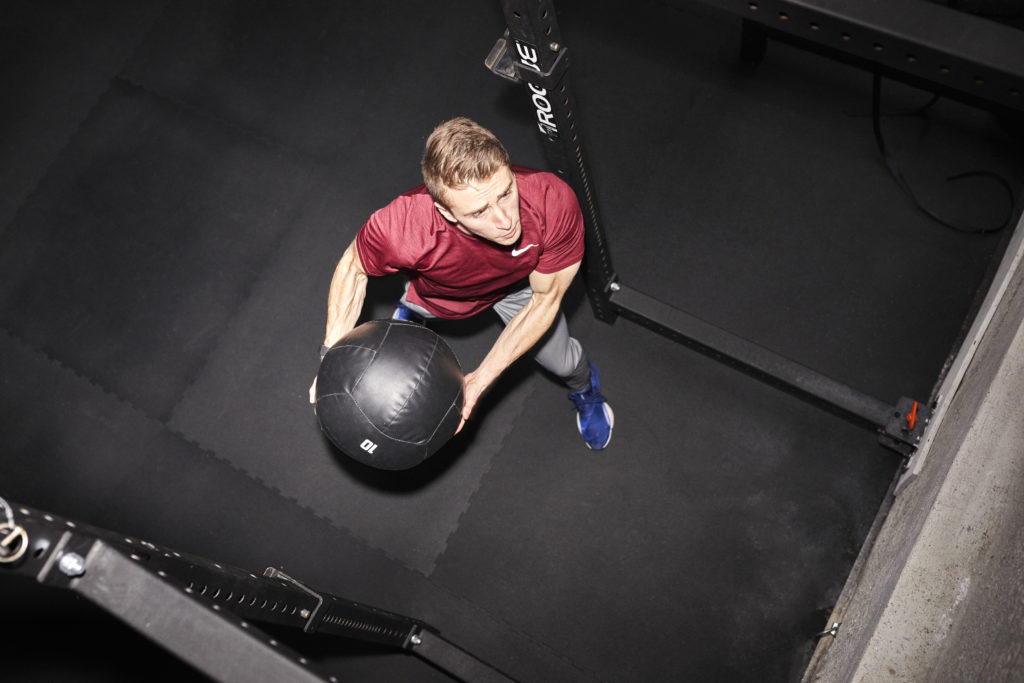
Medicine Ball Rotational Throws
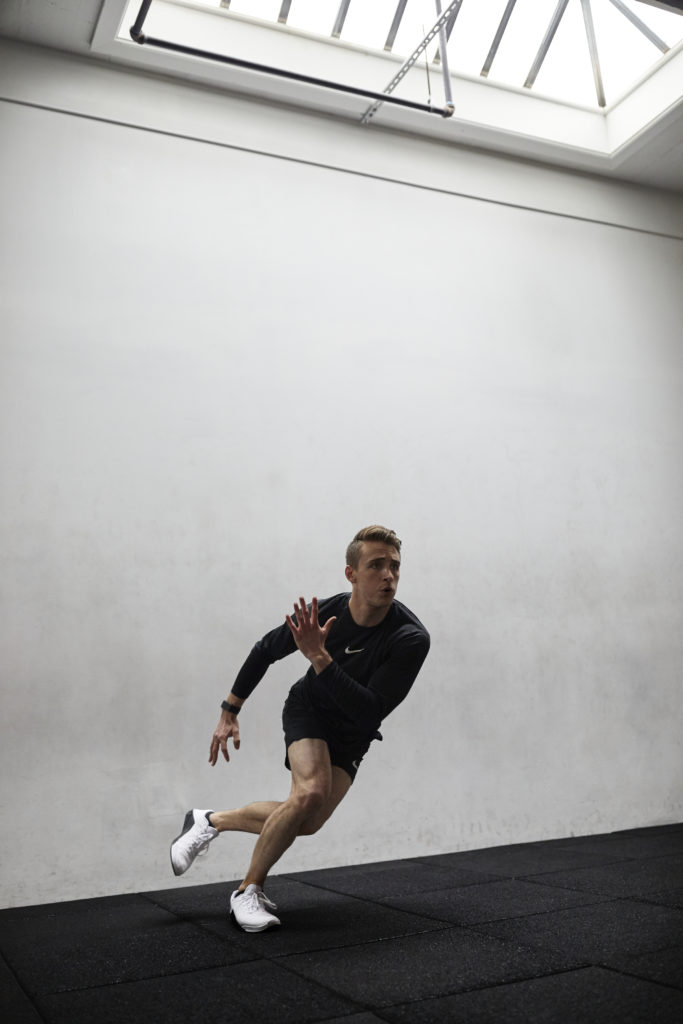
Single-Leg Lateral Bounds
Conditioning
A dreaded word to some. But if you want to experience results you need a well-rounded routine that incorporates some kind of mobility, strength, and yes, conditioning.
Just a quick distinction between conditioning and cardio: both are methods to improve cardiovascular health, but cardio sessions are typically longer with steady, continuous effort. Conditioning, on the other hand, utilizes structured patterns of work and rest to elicit a desired response from the body.
Conditioning is all about giving you a solid base of endurance to train and prepare your body for greater volume, work, and intensity — while improving your ability to recover after a bout of exercise.
Think of these benefits outside the context of working out, too. More endurance means greater productivity, energy, and focus to do the things you need to do on a daily basis.
Playbook: Prowler Pushes, Assault Bike, Jump Rope, Battle Ropes, Deadmill Sprints (a solid alternative to prowler pushes where the treadmill is turned off and you have to push your hands on the top handles and drive through your legs to move the treads)
Here are a few conditioning circuits to try out:
- 20-second prowler or treadmill sprint, 40 battle rope slams, 60 fast pace jump rope hops. Repeat x 10 rounds.
- 10 second Assault Bike sprint, 20-second slow recovery. Repeat for 10 minutes and increase by 5 minutes every couple of weeks until you’re able to reach 25 minutes.
Now that you have these methods and exercises in your toolbox, you can stop scrolling through the explore page on Instagram and get to work!



